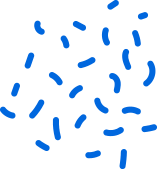
Our offline Classroom Learning Programs ensure the intensive concept clearance of our students in line with Class 11 IIT JEE Coaching in Jaipur. It’s a conventional and most effective program where every student is mentored personally. It is designed to strengthen specific weak areas of an individual student by aiding personalized attention. It’s a program designed to mentor student at grass root level in coordination with their parents. It works primarily on emotional quotient developed between student and faculties, where faculties are guardians in form of teachers.
It’s basically a unique program for JEE Classroom Course & various level Olympiads primarily focussed on concept building and result generation. It is run on specific centres of excellence of B2E Learning. In these centres of excellence per cent selection is given high priority. It has limited seats and enrolments are majorly on basis of our National level scholarship exams - BSAT (B2e Learning Scholarship cum Admission Test).
Chapter–1: Physical World Physics-scope and excitement; nature of physical laws; Physics, technology and society.
Chapter–2: Units and Measurements Need for measurement: Units of measurement; systems of units; SI units, fundamental and derived units. Length, mass and time measurements; accuracy and precision of measuring instruments; errors in measurement; significant figures. Dimensions of physical quantities, dimensional analysis and its applications.
Chapter–3: Motion in a Straight Line Frame of reference, Motion in a straight line: Position-time graph, speed and velocity. Elementary concepts of differentiation and integration for describing motion, uniform and non- uniform motion, average speed and instantaneous velocity, uniformly accelerated motion, velocity - time and position-time graphs. Relations for uniformly accelerated motion (graphical treatment).
Chapter–4: Motion in a Plane Scalar and vector quantities; position and displacement vectors, general vectors and their notations; equality of vectors, multiplication of vectors by a real number; addition and subtraction of vectors, relative velocity, Unit vector; resolution of a vector in a plane, rectangular components, Scalar and Vector product of vectors. Motion in a plane, cases of uniform velocity and uniform accelerationprojectile motion, uniform circular motion.
Chapter–5: Laws of Motion Intuitive concept of force, Inertia, Newton's first law of motion; momentum and Newton's second law of motion; impulse; Newton's third law of motion. Law of conservation of linear momentum and its applications. Equilibrium of concurrent forces, Static and kinetic friction, laws of friction, rolling friction, lubrication. Dynamics of uniform circular motion: Centripetal force, examples of circular motion (vehicle on a level circular road, vehicle on a banked road).
Chapter–6: Work, Engery and Power Work done by a constant force and a variable force; kinetic energy, workenergy theorem, power. Notion of potential energy, potential energy of a spring, conservative forces: conservation of mechanical energy (kinetic and potential energies); nonconservative forces: motion in a vertical circle; elastic and inelastic collisions in one and two dimensions.
Chapter–7: System of Particles and Rotational Motion Centre of mass of a two-particle system, momentum conservation and centre of mass motion. Centre of mass of a rigid body; centre of mass of a uniform rod. Moment of a force, torque, angular momentum, law of conservation of angular momentum and its applications. Equilibrium of rigid bodies, rigid body rotation and equations of rotational motion, comparison of linear and rotational motions. Moment of inertia, radius of gyration, values of moments of inertia for simple geometrical objects (no derivation). Statement of parallel and perpendicular axes theorems and their applications.
Chapter–8: Gravitation Kepler's laws of planetary motion, universal law of gravitation. Acceleration due to gravity and its variation with altitude and depth. Gravitational potential energy and gravitational potential, escape velocity, orbital velocity of a satellite, Geo-stationary satellites.
Chapter–9: Mechanical Properties of Solids Elastic behaviour, Stress-strain relationship, Hooke's law, Young's modulus, bulk modulus, shear modulus of rigidity, Poisson's ratio; elastic energy.
Chapter–10: Mechanical Properties of Fluids Pressure due to a fluid column; Pascal's law and its applications (hydraulic lift and hydraulic brakes), effect of gravity on fluid pressure. Viscosity, Stokes' law, terminal velocity, streamline and turbulent flow, critical velocity, Bernoulli's theorem and its applications. Surface energy and surface tension, angle of contact, excess of pressure across a curved surface, application of surface tension ideas to drops, bubbles and capillary rise.
Chapter–11: Thermal Properties of Matter Heat, temperature, thermal expansion; thermal expansion of solids, liquids and gases, anomalous expansion of water; specific heat capacity; Cp, Cv - calorimetry; change of state - latent heat capacity. Heat transfer-conduction, convection and radiation, thermal conductivity, qualitative ideas of Blackbody radiation, Wein's displacement Law, Stefan's law, Greenhouse effect.
Chapter–12: Thermodynamics Thermal equilibrium and definition of temperature (zeroth law of thermodynamics), heat, work and internal energy. First law of thermodynamics, isothermal and adiabatic processes. Second law of thermodynamics: reversible and irreversible processes, Heat engine and refrigerator. Unit IX: Behaviour of Perfect Gases and Kinetic Theory of Gases 08 Periods
Chapter–13: Kinetic Theory Equation of state of a perfect gas, work done in compressing a gas. Kinetic theory of gases - assumptions, concept of pressure. Kinetic interpretation of temperature; rms speed of gas molecules; degrees of freedom, law of equi-partition of energy (statement only) and application to specific heat capacities of gases; concept of mean free path, Avogadro's number.
Chapter–14: Oscillations Periodic motion - time period, frequency, displacement as a function of time, periodic functions. Simple harmonic motion (S.H.M) and its equation; phase; oscillations of a loaded spring- restoring force and force constant; energy in S.H.M. Kinetic and potential energies; simple pendulum derivation of expression for its time period. Free, forced and damped oscillations (qualitative ideas only), resonance.
Chapter–14: Oscillations Periodic motion - time period, frequency, displacement as a function of time, periodic functions. Simple harmonic motion (S.H.M) and its equation; phase; oscillations of a loaded spring- restoring force and force constant; energy in S.H.M. Kinetic and potential energies; simple pendulum derivation of expression for its time period. Free, forced and damped oscillations (qualitative ideas only), resonance.
Chapter–15: Waves Wave motion: Transverse and longitudinal waves, speed of travelling wave, displacement relation for a progressive wave, principle of superposition of waves, reflection of waves, standing waves in strings and organ pipes, fundamental mode and harmonics, Beats, Doppler effect
General Introduction: Importance and scope of Chemistry. Atomic and molecular masses, mole concept and molar mass, percentage composition, empirical and molecular formula, chemical reactions, stoichiometry and calculations based on stoichiometry.
Bohr's model and its limitations, concept of shells and subshells, dual nature of matter and light, de Broglie's relationship, Heisenberg uncertainty principle, concept of orbitals, quantum numbers, shapes of s, p and d orbitals, rules for filling electrons in orbitals - Aufbau principle, Pauli's exclusion principle and Hund's rule, electronic configuration of atoms, stability of half-filled and completely filled orbitals
Modern periodic law and the present form of periodic table, periodic trends in properties of elements -atomic radii, ionic radii, inert gas radii, Ionization enthalpy, electron gain enthalpy, electronegativity, valency. Nomenclature of elements with atomic number greater than 100.
Valence electrons, ionic bond, covalent bond, bond parameters, Lewis structure, polar character of covalent bond, covalent character of ionic bond, valence bond theory, resonance, geometry of covalent molecules, VSEPR theory, concept of hybridization, involving s, p and d orbitals and shapes of some simple molecules, molecular orbital theory of homonuclear diatomic molecules(qualitative idea only), Hydrogen bond.
Concept of oxidation and reduction, redox reactions, oxidation number, balancing redox reactions, in terms of loss and gain of electrons and change in oxidation number.
Position of hydrogen in periodic table, occurrence, isotopes, hydrides-ionic covalent and interstitial; physical and chemical properties of water, heavy water, hydrogen as a fuel
Some basic Principles and Techniques: General introduction, classification and IUPAC nomenclature of organic compounds. Electronic displacements in a covalent bond: inductive effect, electromeric effect, resonance and hyper conjugation. Homolytic and heterolytic fission of a covalent bond: free radicals, carbocations, carbanions, electrophiles and nucleophiles, types of organic reactions
Gases and Liquids: Three states of matter, intermolecular interactions, types of bonding, melting and boiling points, role of gas laws in elucidating the concept of the molecule, Boyle's law, Charles law, Gay Lussac's law, Avogadro's law, ideal behaviour, empirical derivation of gas equation, Avogadro's number, ideal gas equation and deviation from ideal behaviour.
Concepts of System and types of systems, surroundings, work, heat, energy, extensive and intensive properties, state functions. First law of thermodynamics -internal energy and enthalpy, measurement of U and H, Hess's law of constant heat summation, enthalpy of bond dissociation, combustion, formation, atomization, sublimation, phase transition, ionization, solution and dilution. Second law of Thermodynamics (brief introduction) Introduction of entropy as a state function, Gibb's energy change for spontaneous and nonspontaneous processes. Third law of thermodynamics (brief introduction).
Equilibrium in physical and chemical processes, dynamic nature of equilibrium, law of mass action, equilibrium constant, factors affecting equilibrium - Le Chatelier's principle, ionic equilibrium- ionization of acids and bases, strong and weak electrolytes, degree of ionization, ionization of poly basic acids, acid strength, concept of pH, buffer solution, solubility product, common ion effect (with illustrative examples).
Group 1 and Group 2 Elements -General introduction, electronic configuration, occurrence, anomalous properties of the first element of each group, diagonal relationship, trends in the variation of properties (such as ionization enthalpy, atomic and ionic radii), trends in chemical reactivity with oxygen, water, hydrogen and halogens, uses. Some p -Block Elements: General Introduction to p -Block Elements Group 13 Elements: General introduction, electronic configuration, occurrence, variation of properties, oxidation states, trends in chemical reactivity, anomalous properties of first element of the group, Boron - physical and chemical properties. Group 14 Elements: General introduction, electronic configuration, occurrence, variation of properties, oxidation states, trends in chemical reactivity, anomalous behaviour of first elements. Carbon-catenation, allotropic forms, physical and chemical properties.
Alkanes - Nomenclature, isomerism, conformation (ethane only), physical properties, chemical reactions.
Alkenes - Nomenclature, structure of double bond (ethene), geometrical isomerism, physical properties, methods of preparation, chemical reactions: addition of hydrogen, halogen, water, hydrogen halides (Markovnikov's addition and peroxide effect), ozonolysis, oxidation, mechanism of electrophilic addition.
Alkynes - Nomenclature, structure of triple bond (ethyne), physical properties, methods of preparation, chemical reactions: acidic character of alkynes, addition reaction of - hydrogen, halogens, hydrogen halides and water.
Aromatic Hydrocarbons: Introduction, IUPAC nomenclature, benzene: resonance, aromaticity, chemical properties: mechanism of electrophilic substitution. Nitration, sulphonation, halogenation, Friedel Craft's alkylation and acylation, directive influence of functional group in monosubstituted benzene. Carcinogenicity and toxicity.
Chapter-1: Sets- Sets and their representations.Empty set.Finite and Infinite sets.Equal sets.Subsets.Subsets of a set of real numbers especially intervals (with notations). Power set. Universal set. Venn diagrams. Union and Intersection of sets.Difference of sets. Complement of a set. Properties of Complement
Chapter-2: Relations & Function- Ordered pairs.Cartesian product of sets.Number of elements in the Cartesian product of two finite sets.Cartesian product of the set of reals with itself (upto R x R x R).Definition of relation, pictorial diagrams, domain, co-domain and range of a relation. Function as a special type of relation. Pictorial representation of a function, domain, co-domain and range of a function. Real valued functions, domain and range of these functions, constant, identity, polynomial, rational, modulus, signum, exponential, logarithmic and greatest integer functions, with their graphs. Sum, difference, product and quotients of functions. 3. Trigonometric Functions (20) Periods Positive and negative angles.Measuring angles in radians and in degrees and conversion from one measure to another.Definition of trigonometric functions with the help of unit circle. Truth of the identity sin2x + cos2x = 1, for all x. Signs of trigonometric functions. Domain and range of trigonometric functions and their graphs.Expressing sin (x±y) and cos (x±y) in terms of sinx, siny, cosx&cosy and their simple applications. Deducing identities like the following: tan(x ± y) = tan x ± tan y 1 ∓ tan x tan y , cot(x ± y) = cot x cot y ∓ 1 cot y ± cot x sinα ± sinβ = 2sin 1 2 (α ± β)cos 1 2 (α ∓ β) cosα + cosβ = 2cos 1 2 (α + β)cos 1 2 (α − β) 𝑐𝑜𝑠𝛼 − 𝑐𝑜𝑠𝛽 = −2𝑠𝑖𝑛 1 2 (𝛼 + 𝛽)𝑠𝑖𝑛 1 2 (𝛼 − 𝛽) Identities related to sin2x, cos2x, tan2 x, sin3x, cos3x and tan3x. General solution of trigonometric equations of the type siny = sina, cosy = cosa and tany = tana.
Chapter-1: Principle of Mathematical Induction- Process of the proof by induction, motivating the application of the method by looking at natural numbers as the least inductive subset of real numbers.The principle of mathematical induction and simple applications.
Chapter 2. Complex Numbers and Quadratic Equations- Need for complex numbers, especially√−1, to be motivated by inability to solve some of the quardratic equations. Algebraic properties of complex numbers.Argand plane and polar representation of complex numbers.Statement of Fundamental Theorem of Algebra, solution of quadratic equations (with real coefficients) in the complex number system.Square root of a complex number.
Chapter 3. Linear Inequalities- Linear inequalities.Algebraic solutions of linear inequalities in one variable and their representation on the number line.Graphical solution of linear inequalities in two variables.Graphical method of finding a solution of system of linear inequalities in two variables.
Chapter 4. Permutations and Combinations- Fundamental principle of counting. Factorial n. (n!) Permutations and combinations, derivation of Formulae for and their connections, simple applications.
Chapter 5. Binomial Theorem- Historical perspective, statement and proof of the binomial theorem for positive integral indices.Pascal's triangle, General and middle term in binomial expansion, simple applications.
Chapter 6. Sequence and Series- Sequence and Series. Arithmetic Progression (A. P.). Arithmetic Mean (A.M.) Geometric Progression (G.P.), general term of a G.P., sum of n terms of a G.P., infinite G.P. and its sum, geometric mean (G.M.), relation between A.M. and G.M. Formulae for the following special sums.
Chapter 1. Straight Lines- Brief recall of two dimensional geometry from earlier classes. Shifting of origin. Slope of a line and angle between two lines. Various forms of equations of a line: parallel to axis, point -slope form, slope-intercept form, two-point form, intercept form and normal form. General equation of a line.Equation of family of lines passing through the point of intersection of two lines.Distance of a point from a line.
Chapter 2. Conic Sections- Sections of a cone: circles, ellipse, parabola, hyperbola, a point, a straight line and a pair of intersecting lines as a degenerated case of a conic section. Standard equations and simple properties of parabola, ellipse and hyperbola.Standard equation of a circle.
Chapter 3. Introduction to Three-dimensional Geometry- Coordinate axes and coordinate planes in three dimensions. Coordinates of a point. Distance between two points and section formula.
Chapter 1. Limits and Derivatives- Derivative introduced as rate of change both as that of distance function and geometrically.Intuitive idea of limit.Limits of polynomials and rational functions trigonometric, exponential and logarithmic functions.Definition of derivative relate it to scope of tangent of the curve, derivative of sum, difference, product and quotient of functions. Derivatives of polynomial and trigonometric functions.
Chapter 1. Mathematical Reasoning- Mathematically acceptable statements. Connecting words/ phrases - consolidating the understanding of "if and only if (necessary and sufficient) condition", "implies", "and/or", "implied by", "and", "or", "there exists" and their use through variety of examples related to real life and Mathema tics. Validating the statements involving the connecting words, difference among contradiction, converse and contrapositive.
Chapter 1. Statistics- Measures of Dispersion: Range, Mean deviation, variance and standard deviation of ungrouped/grouped data. Analysis of frequency distributions with equal means but different variances.
Chapter 2. Probability- Random experiments; outcomes, sample spaces (set representation). Events; occurrence of events, ‘not’, ‘and’ and ‘or’ events, exhaustive events, mutually exclusive events, Axiomatic (set theoretic) probability, connections with other theories of earlier classes. Probability of an event, probability of ‘not’, ‘and’ and ‘or’ events.

B. Tech - Malaviya National Institute of Technology (MNIT), 5+ Years of Teaching Exp, Ex. Resonance Faculty, International scholar (IDB), Senior Faculty of Chemistry.

Offline classes by highly experienced faculties who have mentored thousands of Top ranks.

One to one doubt session by faculties who teaches you in class on a regular basis.

Video Library - To revise from video lectures of your favourite teachers.

Access to a full day library for self study in the institute itself.

Parents Teacher Meetings & Student performance report.

Academic counselling & motivation sessions to keep boosting your academic journey.
JEE classroom course and Board exam relevant test series are conducted on regular basis. Annual Test Planner having test dates and syllabus for the whole session is provided to the students. Post-test analysis and detailed discussion on regular basis




It's a sense of responsibility you carry on your shoulder. It's symbolic of learning at ease.

A leap of faith which will fill you up with good vibes and keep you calm in tough times.